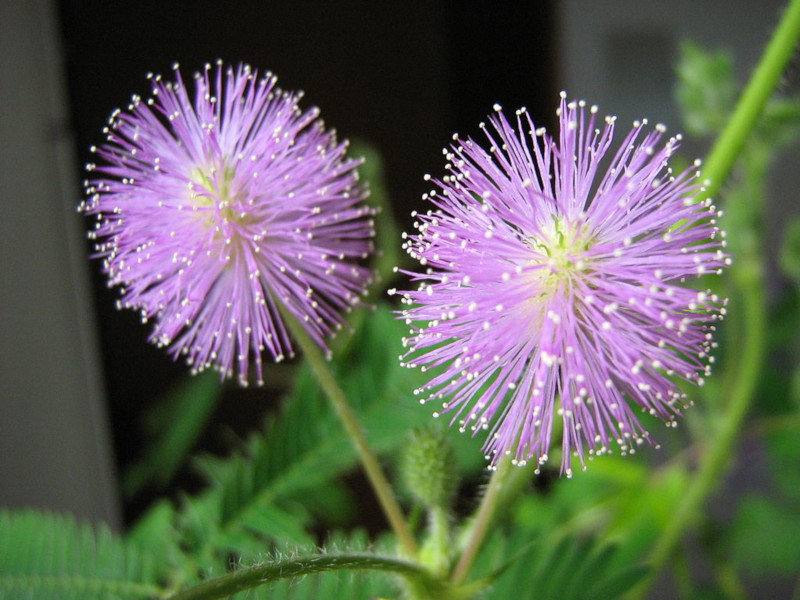
Shameplant Facts
- Perhaps most notably, this deceptively simple-seeming flora most frequently goes by the common name of the Shameplant. Do not let that term fool you, however. In reality, it represents a fascinatingly evolved member of the pea/legume Family.
- It also goes by several other common names, though. These alternate terms themselves further provide subtle clues to its unique nature. Those terms include the sleepy plant, the sensitive plant, the action plant, and, most distinctively, the touch-me-not.
- Professional researchers, meanwhile know it best by its scientific name of Mimosa pudica. By either of these many terms, though, it remains a remarkably adapted species. It’s often planted by gardeners solely out of appreciation for its remarkable traits.
- The Swedish botanist Carl Linnaeus made the first formal recognition of the plant as a separate and distinct species. This intriguing recognition, furthermore, took place in the year 1753. The official publication of his work appeared in a book he published.
- Fortunately, the awesome Shameplant appears to be maintaining a population that’s both sufficient and stable. This further seems to hold true throughout the entirety of its natural range. The IUCN therefore currently lists it as Least Concern on its Red List.
- This status nevertheless remains uncertain, due to rapidly changing factors. For now, it faces no immediate threat from habitat loss, due to its range of appearance. It remains vulnerable to the same danger posed by climate change as all species, however.
Related Articles
Shameplant Physical Description
Despite its name, the incredible Shameplant has absolutely nothing to be ashamed about. In this wonderful species of Angiosperm, Nature created a flora possessed of an astounding ability, in fact. It also evolved to develop as either a perennial or annual flowering plant.
When young, the thin central stem it produces remains mostly erect. As it ages, however, this turns into a creeping vine. In point of fact, this stem, which frequently branches, often hangs quite low, and has a decidedly limp consistency to it. It also has a prickly convering.
In total, the central stem attains an average length of roughly 5 ft (1.5 m). Form this, the many smaller stems branch out and develop elongated leaves. These further generally number between 10 – 26 in total, evenly arranged on opposite sides of the stem.
The flowers of the Shameplant, meanwhile, also appear along the length of the central stem. After blooming, these present as either a bright purple or a pale pink in color. Its prickly skinned fruit also develops in clusters of 2 -8 small pods, and contain tiny brown seeds.
- Kingdom: Plantae
- Phylum: Angiosperm
- Class: Eudicots
- Order: Fabales
- Family: Fabaceae
- Genus: Mimosa
- Species: M. pudica
Shameplant Distribution, Habitat, and Ecology
The amazing Shameplant presently has a primarily pantropical distribution, as well as also appearing in other regions. It originally evolved as native to portions of Central America and South America, however. The actions of man quickly spread the plant, though.
Now, this highly adaptable plant grows in the wild in many scattered parts of the globe. These include such regions as southern Africa, southern and eastern Asia. It’s also become quite well established in southern portions of the United States, in North America.
Its adaptability further serves to allow it to flourish in varied climates and habitats. Its native one, though, consisted of the tropical portions of Central and South America. The intrepid species nonetheless thrives, apparently equally well, in different temperate regions.
It nonetheless primarily grows in soil types that might surprise most people. That’s because it grows best in areas consisting of nutrient poor soils. The Shameplant also, however, prefers direct sunlight, performing less well in regions including copious shade.
It’s best known, though, for one amazing attribute. That’s due to the fact that its leaves actively defend themselves from damage! More precisely, if shaken or touched, these fold in on themselves in a matter of seconds. These then open again a few minutes later.
Species Sharing Its Range
Check out our other articles on Four Fabulous Marine Shrimp, Swift Fox, Everglades, Emerald Swallowtail, Jackson’s Chameleon, Epaulette Shark, Vietnamese Mossy Frog, Tufted coquette
